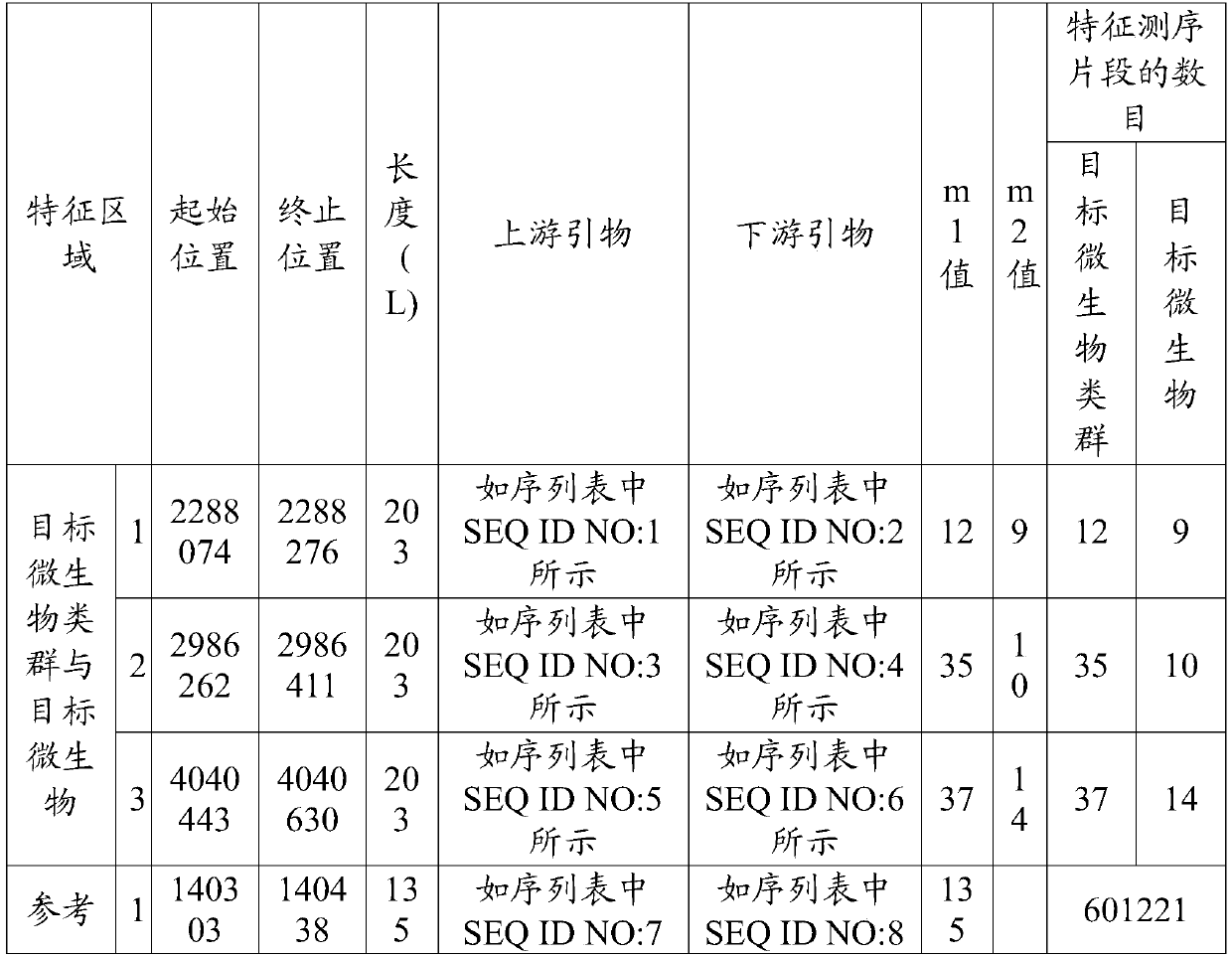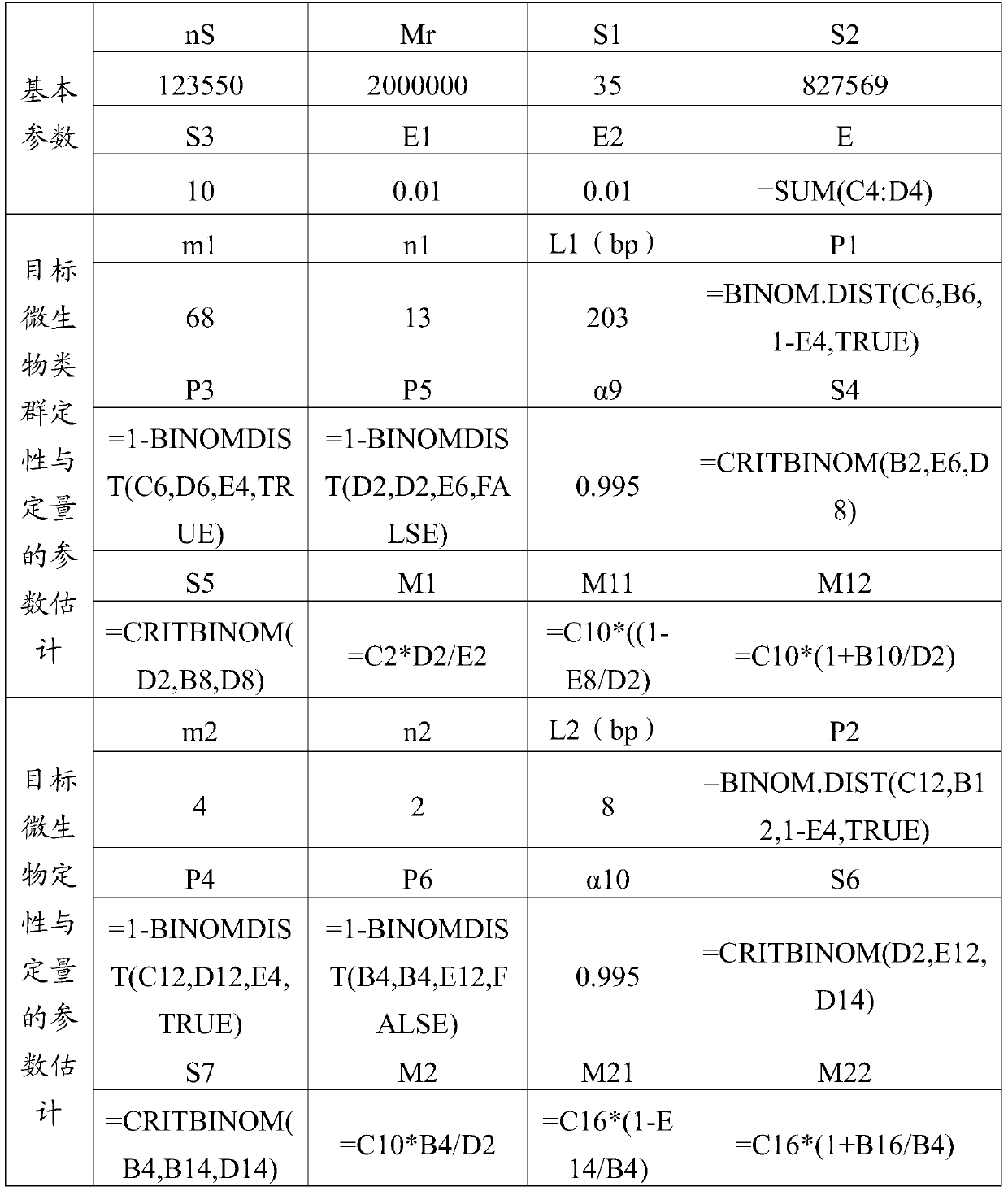A qualitative and quantitative detection method for food microorganisms
A technology of microorganisms and target microorganisms, applied in the biological field, can solve the problems of inaccurate qualitative and quantitative detection of microorganisms, and achieve the effect of fine detection results, high resolution, and guaranteed probability
- Summary
- Abstract
- Description
- Claims
- Application Information
AI Technical Summary
Problems solved by technology
Method used
Image
Examples
Embodiment 1
[0040] Identification of Pork Contaminating Microorganisms
[0041] The sample to be tested is food, and the sample to be tested in this embodiment is raw pork purchased from the Zhuankou Market in Wuhan. It is possible to determine whether it is safe to eat the raw pork by detecting the microorganisms that may be contaminated in the sample to be tested.
[0042] Step 1. Determining the target microbial group in the sample to be tested, target microorganisms and non-target organisms, and reference microorganisms that do not exist in the sample to be tested, the specific method is as follows:
[0043] The number of target microbial groups ≥ 1, and each target microbial group includes ≥ 0 target microorganisms; target microorganisms can be bacteria, viruses, fungi, actinomycetes, rickettsia, mycoplasma, chlamydia, spirochetes, algae and protozoa at least one of the animals. The purpose of this example is to identify Salmonella enterica in the sample to be tested, which is the m...
Embodiment 2
[0089] Embodiment two, the identification of lettuce contaminating microorganism
[0090] The sample to be tested in this embodiment is lettuce purchased from the Zhuankou Market in Wuhan, and the detection of possible contaminated microorganisms in the sample to be tested can determine whether it is safe to eat the lettuce, especially if it is not cooked. Embodiment 2 of the present invention is similar to the method of Embodiment 1, and the methods, parameters and results not mentioned are the same as those of Embodiment 1.
[0091] Step 1. Determining the target group of microorganisms in the sample to be tested, the target microorganisms and non-target organisms, and the reference microorganisms that do not exist in the sample to be tested. The specific method and results are the same as in Example 1.
[0092] Step 2. According to the reference genome sequence of the target microorganism group, the reference genome sequence of the target microorganism, the reference genome...
PUM
 Login to View More
Login to View More Abstract
Description
Claims
Application Information
 Login to View More
Login to View More - R&D Engineer
- R&D Manager
- IP Professional
- Industry Leading Data Capabilities
- Powerful AI technology
- Patent DNA Extraction
Browse by: Latest US Patents, China's latest patents, Technical Efficacy Thesaurus, Application Domain, Technology Topic, Popular Technical Reports.
© 2024 PatSnap. All rights reserved.Legal|Privacy policy|Modern Slavery Act Transparency Statement|Sitemap|About US| Contact US: help@patsnap.com










